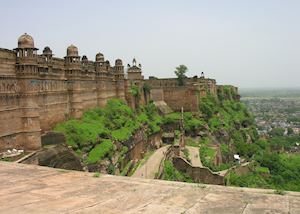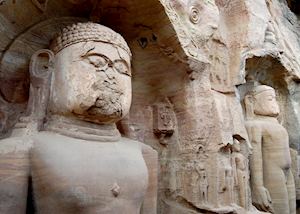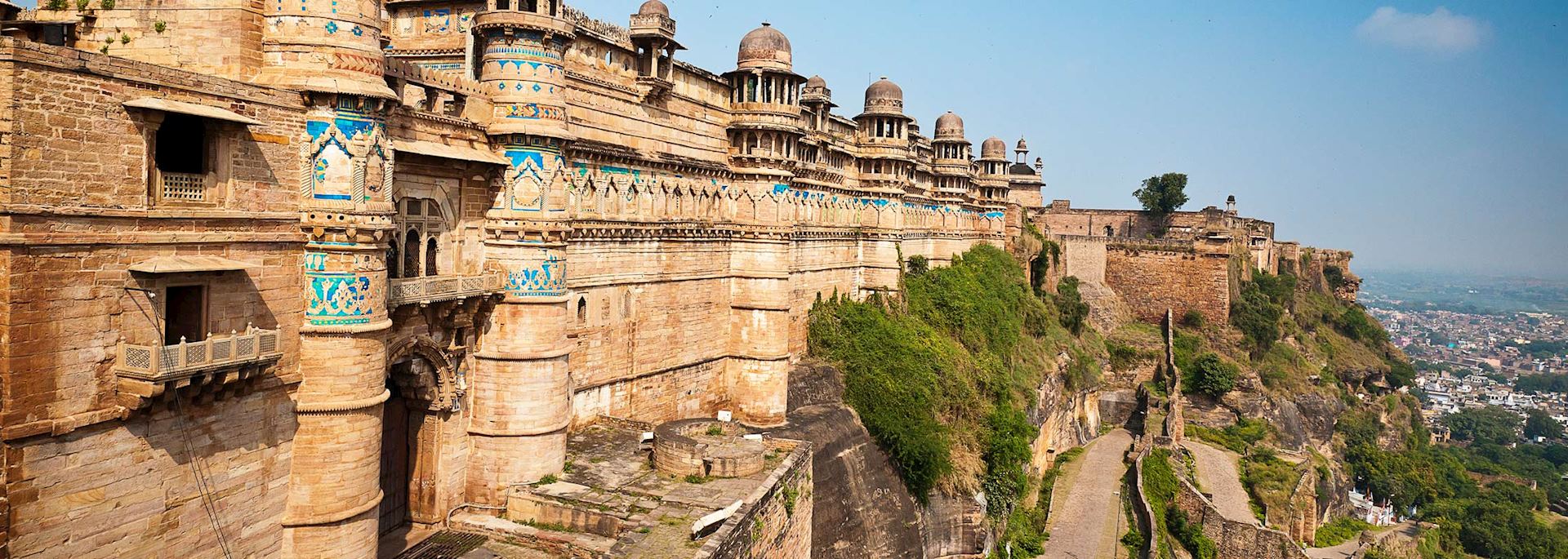Jump to:
Rajasthan may be well known for its fortress cities. But, for the real ‘pearl in the necklace’ of Indian forts — as cited by the first Mughal emperor, Babur — you need to head a little farther south. About three hours’ drive south of Agra, Gwalior Fort sits in India’s central plains, in the often-ignored-by-visitors state of Madhya Pradesh.
 There’s been a settlement here since the 2nd century, and Gwalior’s stronghold is surrounded by a sprawl of temples, palaces, tombs and lakes that have converged to create the modern city. This is the place to come if you’d like to admire an Indian cityscape from the battlements of India’s most impenetrable fort — and often as not, have it to yourself.
There’s been a settlement here since the 2nd century, and Gwalior’s stronghold is surrounded by a sprawl of temples, palaces, tombs and lakes that have converged to create the modern city. This is the place to come if you’d like to admire an Indian cityscape from the battlements of India’s most impenetrable fort — and often as not, have it to yourself.
If you haven’t heard of Gwalior before, it’s probably because it doesn’t fit into any of the standard routes across India. Instead, it works well as a stop on a more off-beat trip across North India, from Delhi to Varanasi. Spend a couple of nights here and you’ll have time to take a guided tour of the city, starting with the fort which sits on an outcrop of sandstone high above the city. Local legend dictates that it’s named after Gwalipa, a sage who cured the 3rd-century king Suraj Sen from leprosy by offering water from a pond. The fort was built around the pond, which is now surrounded by grand stone pillars.
Inside the fort you’ll find grand mahals (palaces), shrines, an underground perfumed pool and an archaeological museum. Bring a torch and you can explore the lower levels (this is where a guide is vital). The highlight though, is on the outside.
 On the towering sandstone cliffs underneath the fort, a series of Jain statues have been carved into the rock. There are more than 1,500 of them, ranging from 15 cm (6 inches) to 17 m (57 ft) tall, set in a series of temples. On first sight, there’s a startling similarity with the temples at Petra.
On the towering sandstone cliffs underneath the fort, a series of Jain statues have been carved into the rock. There are more than 1,500 of them, ranging from 15 cm (6 inches) to 17 m (57 ft) tall, set in a series of temples. On first sight, there’s a startling similarity with the temples at Petra.
While the fort dominates, there’s more to see. The Jai Vilas Palace, built in 1809, is the historical seat of the Scindia family. They were once one of the most powerful dynasties in North India (and, as a family of prominent politicians, arguably still are).
A large part of the palace is open to visitors, including its showpiece, a hall painted with real gold and approached by a crystal staircase. With its red carpets, two of the world’s largest crystal chandeliers and European-influenced design, it wouldn’t have looked out of place alongside Buckingham Palace in its time (it’s a little run down now). There’s even a tiny silver toy train used to ferry cigars around the dining table.
The Tomb of Tansen, a renowned 16th-century classical musician, is to the east of the city, and the surrounding park hosts a music festival in his name every November. It’s also a peaceful place (though maybe not in November) to visit after clambering about the fort.
And, if you still feel you haven’t made the most of the fort, there’s the nightly, 45-minute sound and lights show (with separate English and Hindi showings ― check timings locally before turning up).
To really get to grips with Gwalior’s former grandeur, you can stay in Usha Kiran Palace, an Art Deco palace built for the Prince of Wales’s stay at the turn of the 19th century.
Best time to visit
Gwalior is at its best from October to March, when the weather is warm and dry with clear blue skies. January and December can be quite cool in the evenings, but tend to see fewer visitors.
who's been there
-
01993 838 92501993 838 345
- Make an enquiry
Places near Gwalior
- Chambal Sanctuary 46 miles away
- Orchha 67 miles away
- Agra 69 miles away
- Fatehpur Sikri 69 miles away
- Bharatpur and Keoladeo Ghana National Park 82 miles away
- Ramathra 88 miles away
- Ranthambhore National Park 105 miles away
- Khajuraho 145 miles away
- Jaipur 153 miles away
- Samode 161 miles away
- Panna National Park 161 miles away
- Bundi 166 miles away
- Delhi 178 miles away
- Bhainsrorgarh 184 miles away
- Shahpura 206 miles away
- Barli 216 miles away
- Pushkar 225 miles away
- Nainital 235 miles away
- Corbett Tiger Reserve 236 miles away
- Chittorgarh 239 miles away
- Bandhavgarh National Park 252 miles away
- Almora 253 miles away
- Satpura National Park 256 miles away
- Chhatra Sagar 258 miles away
- Nimaj 259 miles away
- Haridwar 259 miles away
- Deogarh 269 miles away
- Rishikesh 271 miles away
- Nagaur 283 miles away
- Devigarh 288 miles away
- Mussoorie 295 miles away
- Kumbhalgarh 295 miles away
- Narlai 295 miles away
Photos of Gwalior
Accommodation choices for Gwalior
We've selected a range of accommodation options for when you visit Gwalior. Our choices usually come recommended for their character, facilities and service or location. Our specialists always aim to suggest properties that match your preferences.
-
![Usha Kiran Palace Hotel, Gwalior]()
Usha Kiran Palace
Gwalior



